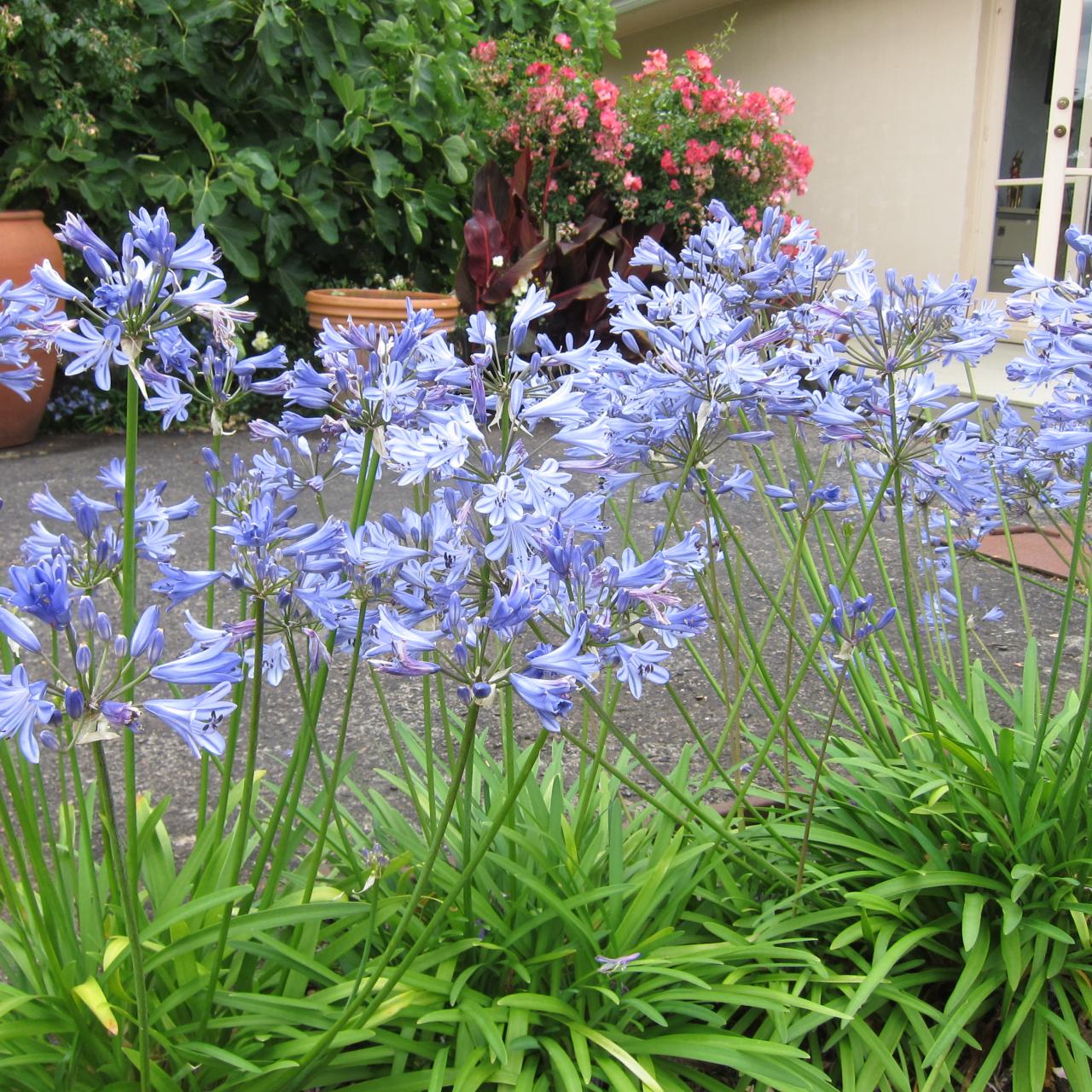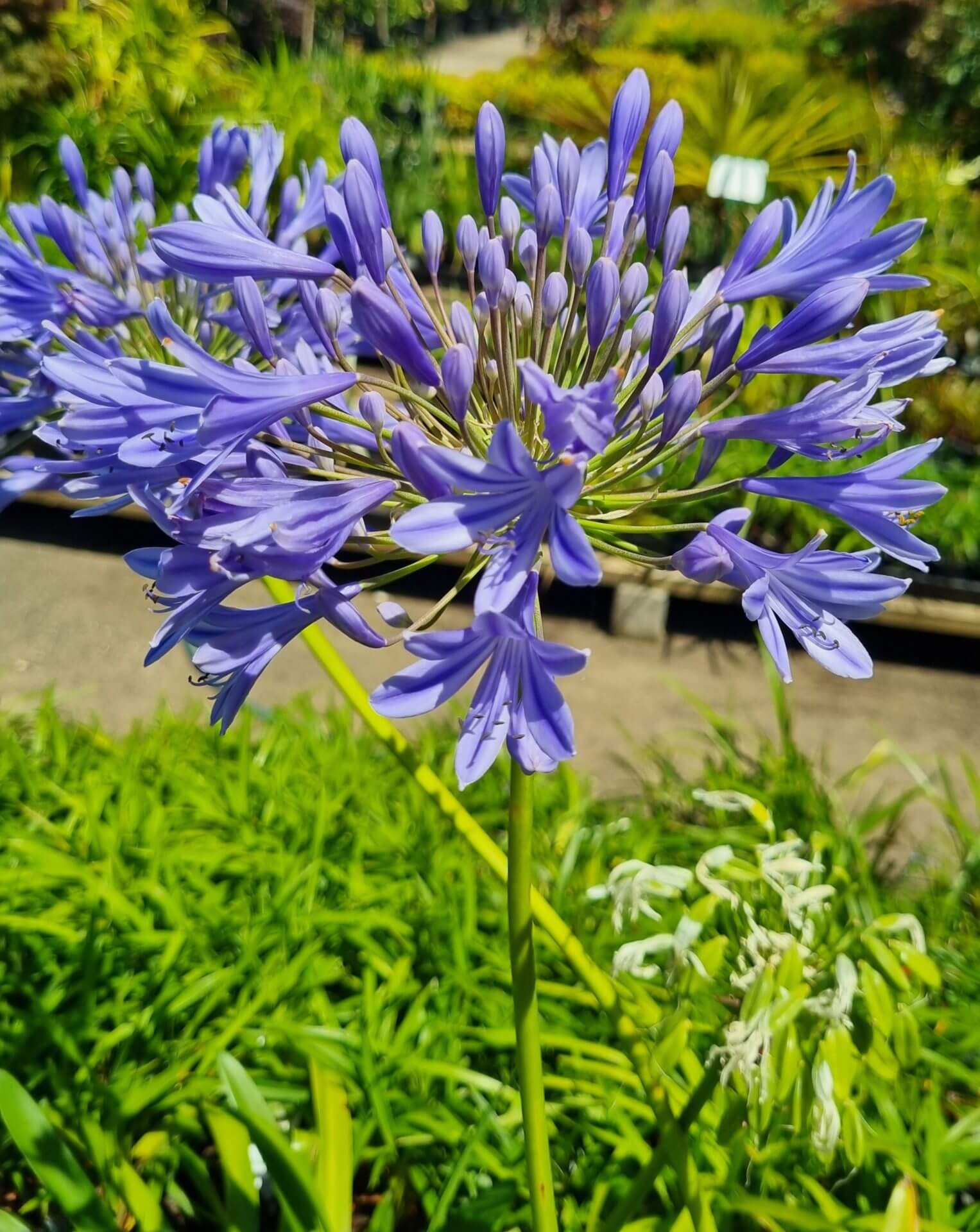Releasing the Secret to Successful Agapanthus Cultivation: Idea for a Flourishing Garden
In the realm of horticulture, growing agapanthus successfully calls for a critical technique that includes various facets of plant care. With careful focus to information, one can unlock the tricks to nurturing these magnificent blooms, causing a yard that prospers with appeal and vibrancy. By recognizing the subtleties of agapanthus farming, one can produce an environment where these plants grow and flower generously. In the following conversation, we will certainly explore crucial tips and techniques that will assist you towards a growing agapanthus garden, offering insights right into best techniques, dirt conditions, sprinkling strategies, and more.
Planting Agapanthus: Finest Practices
When planting Agapanthus, correct dirt prep work is vital for making sure effective growth and growth of these gorgeous flowers. Agapanthus, generally called Lily of the Nile or African lily, thrives in well-draining soil with a somewhat acidic to neutral pH level - Agapanthus. Prior to growing, it is critical to change heavy clay soils with natural issue such as garden compost or peat moss to enhance drainage and provide essential nutrients for the plants
To grow Agapanthus, pick a place that receives full sunshine to partial shade, as this will advertise healthy growth and abundant flowering. Dig an opening two times the diameter of the plant's root ball and position the Agapanthus at the exact same deepness it was formerly expanding. Gently backfill the hole with dirt, pushing down firmly to get rid of any kind of air pockets around the roots.
Water the freshly grown Agapanthus thoroughly and remain to keep the dirt equally wet, particularly during the plant's energetic expanding season. Agapanthus. Using a well balanced fertilizer once a month can additionally sustain the plant's development and blooming. By complying with these finest methods for planting Agapanthus, you can produce a magnificent display screen of these fascinating flowers in your garden
Suitable Soil Issues for Agapanthus
For optimum development and flowering success of Agapanthus plants, ensuring the dirt conditions are perfect is vital. Agapanthus grows in well-draining dirt with a somewhat acidic to neutral pH degree ranging from 6.0 to 7.0. This sort of dirt allows for ample water drainage, preventing waterlogging which can result in root rot. To enhance dirt drain, think about adding organic issue such as compost or peat moss when preparing the growing site. Moreover, Agapanthus prefers dirt that is abundant in nutrients, so integrating a well balanced plant food during the expanding season can advertise healthy and balanced development and vibrant blooms.

Watering and Fertilizing Tips
To ensure healthy and balanced growth and dynamic blooms, proper watering and fertilizing techniques are vital for effective Agapanthus growing. Agapanthus plants profit from normal watering, especially during the growing period.
When it involves feeding Agapanthus, a well balanced fertilizer with equivalent components nitrogen, phosphorus, and potassium can be applied in the spring to promote healthy development and flowering. Slow-release fertilizers are excellent for giving nutrients gradually over an extensive duration. Stay clear of over-fertilizing, as this can cause excessive vegetation development at the cost of blooms.
In addition, integrating raw material like compost right into the dirt can enhance nutrient levels and boost soil structure, assisting in the total health and wellness of the Agapanthus plants. By following these watering and feeding tips, garden enthusiasts can ensure their Agapanthus plants thrive and create sensational displays of flowers.
Pruning and Deadheading Methods
Correct trimming and deadheading strategies play a vital role in maintaining the health and appearances of Agapanthus plants, matching the necessary practices of watering and feeding for successful farming. Pruning Agapanthus entails eliminating spent blossom heads, yellowing or dead fallen leaves, and general shaping of the plant to promote far better growth. Deadheading, the procedure of getting rid of faded flowers, not just improves the plant's appearance yet additionally encourages further blooming.
When deadheading Agapanthus, it is a good idea to trim off the blossom stem at the base utilizing sharp, tidy shears. This procedure redirects the plant's power from seed manufacturing back right into origin and foliage growth, promoting a healthier and a lot more durable plant. Routine deadheading can expand the growing period of Agapanthus and protect against self-seeding, which can result in overcrowding.
In terms of pruning, Agapanthus typically benefits from a light trim after blooming to clean the plant and urge fresh growth. Reducing the spent blossom stems and getting rid of any damaged or dead foliage assists maintain the plant's vitality and overall look. However, it is important to prevent cutting into the crown of the plant, as this can weaken its wellness.

Protecting Agapanthus From Pests and Diseases
Applying efficient parasite and illness management methods is crucial to safeguarding the wellness and vigor of Agapanthus plants in growing. One common parasite that influences Agapanthus is the Agapanthus borer, a caterpillar that tunnels right into the plant, causing damages to the fallen leaves and blossoms.
In addition why not check here to pests, Agapanthus are susceptible to illness such as root rot and fungal leaf places. These issues can frequently be prevented by guaranteeing correct drain and avoiding overwatering. Affected components of the plant must be quickly eliminated to stop further spread if indications of disease show up. Fungicides might also be used as a therapy procedure, adhering to the maker's guidelines meticulously. By remaining attentive and resolving parasite and condition concerns quickly, gardeners can aid their Agapanthus grow and thrive.

Verdict
In final thought, successful cultivation of agapanthus needs proper growing techniques, perfect soil conditions, adequate watering and fertilizing, routine pruning and deadheading, and defense from pests and diseases. By complying with these pointers and tricks, garden enthusiasts can make sure a flourishing garden loaded with attractive agapanthus blossoms. Agapanthus. Remember to preserve regular care and interest to detail to promote the health and wellness and longevity of these stunning plants
When growing Agapanthus, correct soil prep work is essential for making sure successful development and growth of these gorgeous flowers.Water the newly grown Agapanthus extensively and proceed to maintain the soil uniformly wet, particularly throughout the plant's get redirected here active growing period.For optimum development and blooming success of Agapanthus plants, guaranteeing the dirt conditions are optimal is vital. When planting or hair transplanting Agapanthus, make sure the dirt is well-prepared to provide the needed structure for the plants resource to establish themselves successfully. One usual pest that affects Agapanthus is the Agapanthus borer, a caterpillar that passages right into the plant, causing damages to the fallen leaves and blossoms.